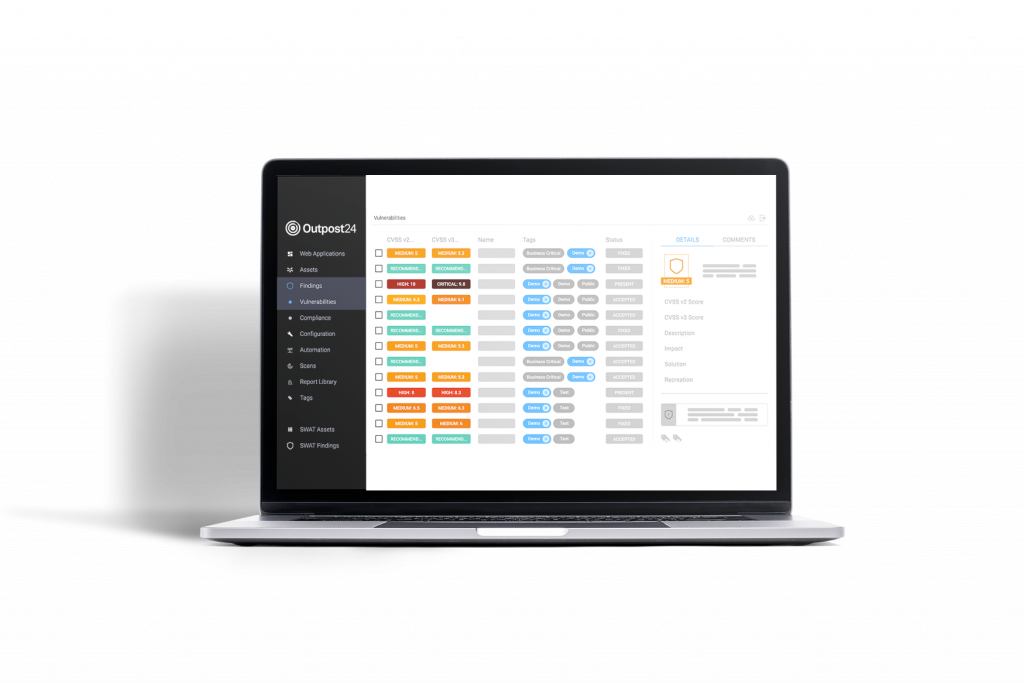How to manage a complex web application attack surface

As organizations scale, their web application portfolios can balloon into the dozens (or even hundreds) of individual services, APIs, customer portals, and microsites. This proliferation creates a sprawling attack surface that can be difficult to inventory, monitor, and secure. Threat Actors are aware of this and exploitation of vulnerabilities is increasing year over year. We’ll run through the challenges organizations face with getting their web application attack surfaces under control and explain how tools like external attack surface management (EASM) and Pen-testing-as-a-Service (PTaaS) can help.
Security challenges of managing lots of web apps
First, each application typically carries its own tech stack, CI/CD pipeline, and configuration management quirks. This makes consistency across environments (development, staging, production) a nearly impossible ideal. In parallel, the attack surface expands: every subdomain, SSL certificate, third-party integration, and open port represents a potential entry point for malicious actors.
Operationally, IT and security teams can struggle to stay on top of alerts from fragmented logging and monitoring tools, often drowning in false positives and reactive firefighting. Vulnerability management becomes a treadmill: identifying new CVEs on one set of applications while legacy code languishes unpatched elsewhere. On the people side, knowledge silos emerge as individual DevOps teams “own” their applications, hampering shared best practices and slowing onboarding of new staff.
Finally, auditing requirements under regulations such as PCI-DSS, GDPR, HIPAA, and SOC2 force organizations to demonstrate repeatable, documented processes for every internet-facing asset—an onerous task when asset tracking is scattered across spreadsheets and point solutions.
How EASM can help
External Attack Surface Management (EASM) platforms serve as a continuous reconnaissance and governance layer for your public-facing assets. Rather than periodic, manual scans, EASM tools constantly monitor your external attack surface of both known and unknown assets. They crawl DNS records, certificate transparency logs, passive DNS databases, cloud provider APIs, and even shadow-IT discovery sources to build a holistic, real-time inventory of every domain, subdomain, application, and API endpoint you own – even those you might not know about!
Once assets are discovered, EASM evaluates each one’s security posture, detecting misconfigurations such as expired TLS certificates, weak cipher suites, open admin portals, or inadvertently exposed cloud storage buckets. Crucially, these findings are contextualized: you learn not just “what” is wrong, but “where” and “how” it fits into your broader environment.
Real-time alerting slashes attacker dwell time, while built-in workflows (triggering Slack notifications, opening Jira tickets, or feeding SIEM rules) ensure issues are never overlooked. For compliance teams, EASM generates audit-ready evidence of ongoing asset discovery, configuration drift detection, and remediation efforts – transforming a once-ad hoc process into a codified, repeatable practice.
Where Pen Testing-as-a-Service adds value
Penetration Testing as a Service (PTaaS) brings expert, on-demand testing into your DevSecOps lifecycle, seamlessly blending automated scanning with manual, business-logic testing. Unlike traditional point-in-time pentests, PTaaS subscriptions enable you to launch tests whenever you deploy major changes, spin up new applications, or simply need an extra layer of assurance.
The hybrid approach means low-hanging vulnerabilities (like SQL injections, XSS flaws, and outdated libraries) are quickly caught by automated engines. On top of that, seasoned penetration testers probe deeper for chained exploits, logic gaps, and privilege escalation paths that machines miss. Findings come in developer-friendly reports complete with proof-of-concept exploits, prioritized risk scores, and clear remediation steps.
Integration with ticketing systems (Jira, GitHub, Azure DevOps) automates remediation tracking, and rapid re-testing confirms that fixes are effective. This eliminates the sometimes months-long wait typical of legacy pentest cadences. For compliance, PTaaS maintains a rolling archive of test scopes, dates, and sign-off deliverables, satisfying audit checkpoints across PCI, SOC2, ISO27001, and more.
Benefits of a combined EASM + PTaaS solution
Bringing EASM and PTaaS together in a unified platform creates a powerful “security control plane” that addresses both discovery and active validation of your external attack surface:
- Single pane of glass: All internet-facing assets discovered via EASM and all pentest findings live in one platform. No more toggling between dashboards or importing/exporting spreadsheets—your team gains instant clarity on where risk concentrates.
- Automated attack path analysis: EASM’s asset map feeds directly into pentest workflows. When a new subdomain or configuration drift is detected, the platform can automatically launch a targeted pentest probe, revealing real-world exploit chains and delivering proof-of-concepts in context.
- Continuous validation loops: Fixes are verified immediately: patch a misconfiguration, see the EASM re-scan flag remedied settings, trigger a lightweight pentest smoke test, and confirm closure—all without manual coordination. This slashes Mean Time to Remediate (MTTR) and keeps your digital perimeter hardened.
- Unified risk scoring and prioritization: By combining exposure metrics (from EASM) with exploitability proof (from PTaaS), each asset receives a consolidated risk score that reflects true business impact. Security teams can focus on what matters most, rather than chasing low-severity noise.
- Operational efficiency and cost savings: One vendor relationship, one pricing model, and one support SLA simplify procurement and vendor management. Shared licensing credits or subscription tiers encourage higher volumes of scans and tests at a lower marginal cost, while eliminating duplicate fees inherent in point-solutions.

Outpost24 CyberFlex: Secure your perimeter today
Outpost24’s CyberFlex delivers this unified EASM + PTaaS control plane in a single, cloud-native platform. With continuous external discovery, real-time configuration monitoring, and on-demand red-team capabilities (all backed by a global team of expert testers) you gain end-to-end visibility, actionable remediation workflows, and audit-ready compliance reporting.
Interested to see how CyberFlex could work for you? Book your free demo today.